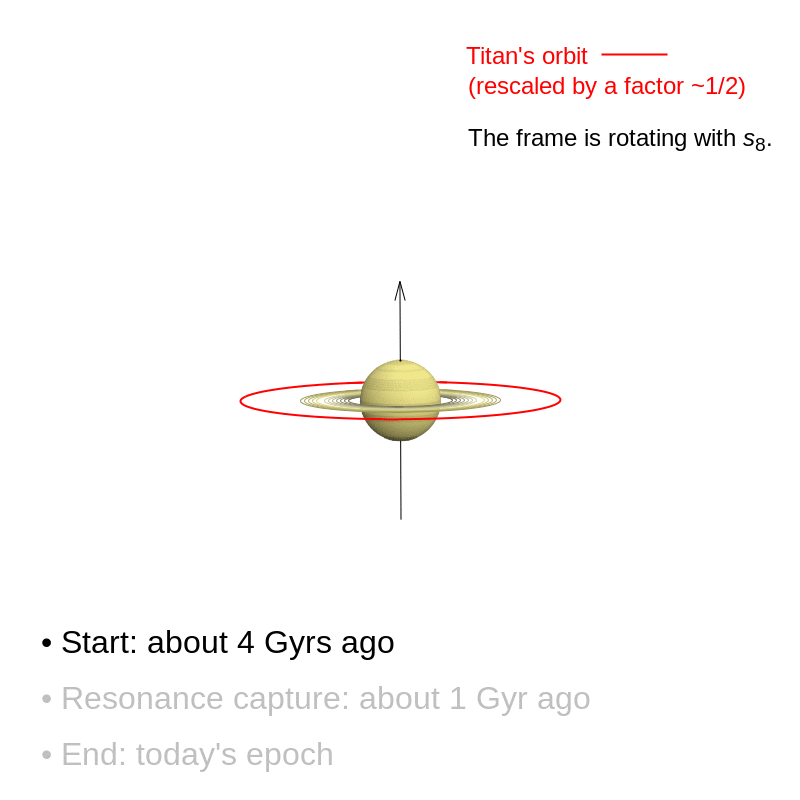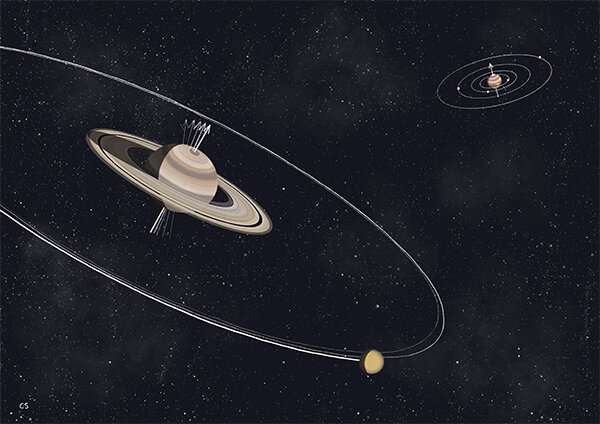By incorporating this increased migration rate into their calculations, the researchers concluded that this process affects the inclination of Saturn's rotation axis: as its satellites move further away, the planet tilts more and more.
The decisive event that tilted Saturn is thought to have occurred relatively recently. For over three billion years after its formation, Saturn's rotation axis remained only slightly tilted. It was only roughly a billion years ago that the gradual motion of its satellites triggered a resonance phenomenon that continues today: Saturn's axis interacted with the path of the planet Neptune and gradually tilted until it reached the inclination of 27° observed today.

These findings call into question previous scenarios. Astronomers were already in agreement about the existence of this resonance. However, they believed that it had occurred very early on, over four billion years ago, due to a change in Neptune's orbit. Since that time, Saturn's axis was thought to have been stable. In fact, Saturn's axis is still tilting, and what we see today is merely a transitional stage in this shift. Over the next few billion years, the inclination of Saturn's axis could more than double.
The research team had already reached similar conclusions about the planet Jupiter, which is expected to undergo comparable tilting due to the migration of its four main moons and to resonance with the orbit of Uranus: over the next five billion years, the inclination of Jupiter's axis could increase from 3° to more than 30°.
Explore further
Melaine Saillenfest et al. The future large obliquity of Jupiter, Astronomy & Astrophysics (2020). DOI: 10.1051/0004-6361/202038432



